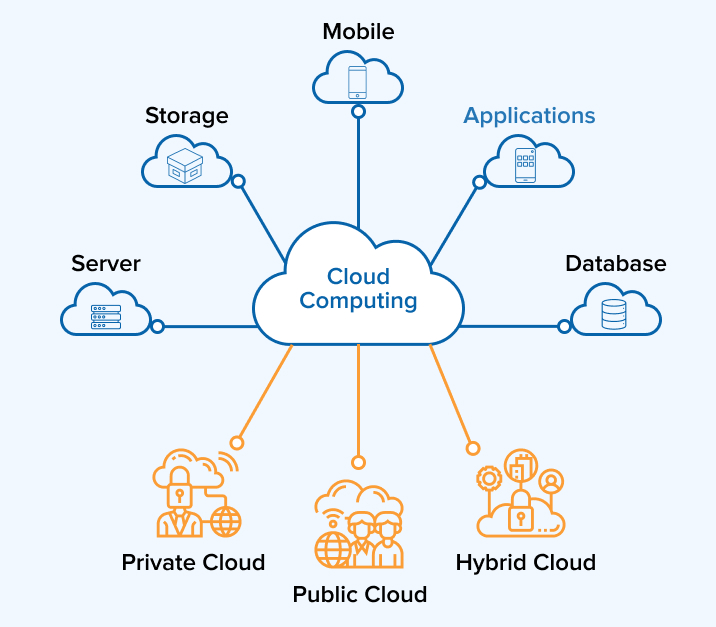Achieve Seamless Scalability With Cloud Services
In the ever-evolving landscape of cloud solutions, achieving smooth scalability stands as a cornerstone for modern-day companies seeking to stay versatile and affordable. The capacity to effortlessly increase or get resources in action to transforming demands is a pivotal advantage in today's busy digital setting. By mastering the art of scalable cloud options, organizations can not just enhance performance and streamline procedures but additionally lead the way for future growth and development. The pursuit for smooth scalability with cloud solutions unveils a globe of opportunities for those going to embrace the transformative power of dynamic source management.
Benefits of Cloud Scalability
Cloud scalability supplies organizations the versatility to dynamically readjust sources based on demand, making certain ideal performance and cost performance. One vital advantage is the capacity to scale sources up or down promptly in reaction to rising and fall workloads. This dexterity allows organizations to meet changing consumer needs without over-provisioning resources, eventually leading to set you back savings. Scalability likewise improves performance by making sure that systems can handle enhanced web traffic or workload without experiencing downtime or slowdowns. By effectively allocating resources, organizations can preserve high degrees of efficiency throughout peak times without unnecessary expenditures during quieter durations. Furthermore, cloud scalability promotes development and trial and error by permitting organizations to conveniently check originalities and scale them as required. This versatility encourages a culture of continuous renovation and adjustment, making it possible for organizations to remain competitive in a rapidly progressing market landscape. Eventually, the benefits of cloud scalability prolong past expense financial savings to include better performance, dexterity, and advancement.
Trick Functions for Scaling
Efficient scaling in cloud services relies on crucial features that make it possible for organizations to change sources dynamically based on need. One crucial function for scaling is flexibility, permitting sources to scale up or down in response to changing work. This makes sure that companies can satisfy efficiency requirements without over-provisioning resources. One more vital feature is scalability, allowing systems to deal with raised work by adding resources effortlessly. This feature is crucial for suiting growth without compromising performance. Furthermore, automation plays a vital function in scaling by automating the provisioning and de-provisioning of sources based on predefined policies. Automation decreases human intervention, boosts efficiency, and guarantees quick feedback to transforming demands. Monitoring and analytics tools are likewise vital for scaling, supplying understandings into resource application, efficiency metrics, and potential bottlenecks. These tools make it possible for companies to make informed decisions and enhance source allocation for efficient scaling. Overall, these key features jointly equip organizations to attain seamless scalability in cloud services.
Implementing Auto-Scaling Strategies
To effectively maximize resource appropriation and adjust to varying workloads, companies must strategically apply auto-scaling strategies in their cloud services infrastructure. Auto-scaling permits systems to automatically readjust the number of calculate resources based on real-time need. There are numerous auto-scaling methods that organizations can use, such as anticipating scaling, which uses historical information to forecast future source demands, and responsive scaling, which responds to existing workload modifications.

Best Practices for Scalability
For companies intending to enhance their scalability in cloud services, executing best techniques is critical for optimal performance and source administration. One key ideal technique is designing applications with a microservices design. This approach breaks down applications into smaller, independent services that can be deployed, upgraded, and scaled independently, enabling better versatility and scalability.
Another essential method is utilizing containerization modern technology, such as Docker or Kubernetes. Containers allow the packaging of applications and their reliances right into separated units, making it easier to scale parts separately and release them regularly throughout different settings.
Furthermore, executing automated implementation and infrastructure as code (IaC) can streamline scalability efforts (linkdaddy cloud why not check here services). Automation tools like Terraform or Ansible help in provisioning and handling resources efficiently, decreasing manual mistakes and enabling fast scalability
In addition, monitoring performance metrics, setting up notifies, and carrying out routine capability planning more information are important methods to guarantee aggressive scalability management. By sticking to these best techniques, companies can achieve seamless scalability in their cloud solutions while optimizing efficiency and resource usage.
Monitoring Performance Metrics
When examining the efficiency of cloud solutions scalability, closely keeping track of performance metrics is important for making sure optimal capability and source allocation. By constantly tracking vital efficiency indicators (KPIs) such as feedback times, throughput, latency, and source use, organizations can acquire useful insights into the health and wellness and efficiency of their cloud facilities. Checking performance metrics allows for the early detection of possible traffic jams or concerns that might influence scalability, making it possible for aggressive actions to be taken to resolve them before they intensify.

Verdict
Finally, attaining smooth scalability with cloud services is important for organizations to optimize efficiency, boost innovation, and keep high performance degrees throughout peak times. By leveraging the advantages of cloud scalability, applying auto-scaling methods, using essential attributes such as flexibility and automation, and following best techniques like application style and efficiency surveillance, services can efficiently scale their systems while making best use of source application and efficiency.
The mission for seamless scalability with cloud solutions unveils a world of possibilities for those eager to accept the transformative power of dynamic source administration.
Cloud scalability provides organizations the versatility to dynamically other adjust sources based on need, making sure optimal performance and expense effectiveness. An additional essential feature is scalability, enabling systems to deal with increased work by adding resources seamlessly.For organizations aiming to boost their scalability in cloud solutions, applying finest practices is critical for ideal efficiency and resource administration.When assessing the efficiency of cloud solutions scalability, closely monitoring efficiency metrics is critical for making sure optimum functionality and source allowance.